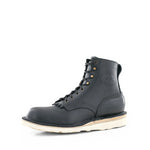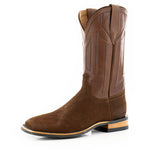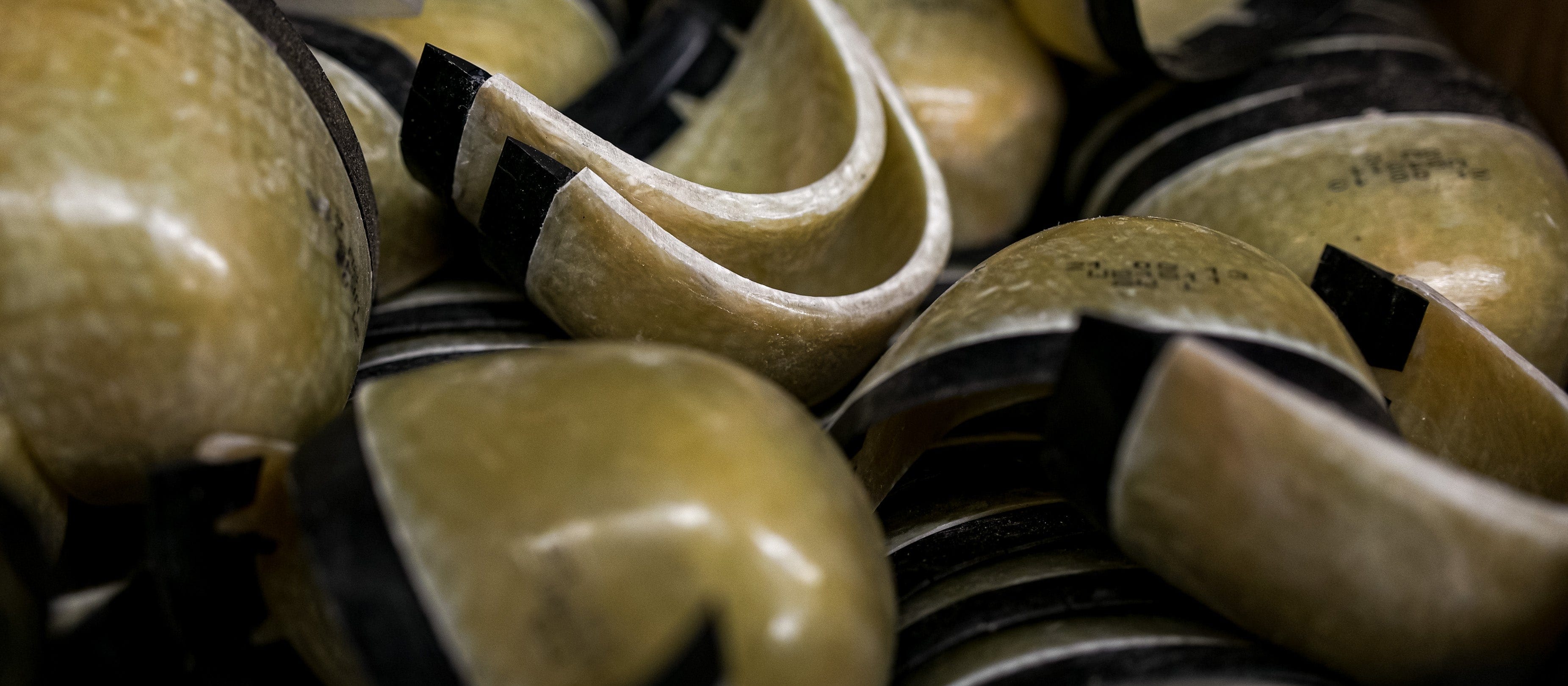Composite vs Steel Safety Toes

History of Safety Toe Boots
Safety toe boots rose to prominence in the 20th century due to an increase in safety concerns and liability costs by companies. The US Congress passed the Occupational Safety and Health Act in 1970 mandating safety footwear in numerous environments. In order to meet standards, safety toe boots must pass impact and compression tests, putting pressure on the toe area to ensure it won't be easily crushed. Steel Toe Boots were initially the primary choice, but developed over time in various styles and colors, including hard plastics, carbon fiber, fiberglass, kevlar, and alloy, depending on the profession.

Photo: Composite Toe Installation
Steel Toe Boots
Steel Toe Boots offer reliable protection for the toes from falling objects and other hazards, such as slips, cuts, lacerations, burns, and punctures. Correctly built steel toe boots are compliant with ASTM F2413-17 Standard Specification for Performance Requirements for Protective Safety Top cap Footwear and may be marked (stamped, stitched, or with a pressure sensitive label) on the gusset, shaft, quarter lining, or tongue. Compliance testing that these boots go through includes conductive protection, metatarsal protection, static dissipative protection, and puncture protection may also be required.
However, some big drawbacks of steel toe boots are that they are:
- Heavy
- Less comfortable in the toe box,
- Less weather-resistant - get hot/cold
- If worse comes to worse, steel toes can actually cut your toes if something heavy enough falls on them.

Photo: Safety Toe installed between the soft leather liner and thick outer layer
Composite Toe Boots
Like their steel counterparts, Composite Toe Boots have been thoroughly tested to achieve the same compliance with the ASTM F2412-18 standard, providing outstanding protection from workplace hazards. Besides an alloy toe, all newer safety toe options are non-metal, which makes them lighter, flexible, and ideal for workers who regularly have to pass through metal detectors. Composite toes have a longer lifespan than steel toes because they don’t rust or bend like steel toes do. Unlike steel toes, composite material offers better insulation from the elements and does not conduct heat. For instance, they won't get piping hot in the summer working on a wildfire or freezing cold in the winter.
Overall, composite offers better:
- Mobility - composite is lighter than steel
- Comfort - plenty of room, doesn't cramp the toes
- Insulation from extreme temperatures
- Security - If something extremely heavy falls on them, they will crack and absorb the blow whereas steel toes could bend down and hurt the wearer.
The main sacrifices you make with Composite Toe Boots is a higher price tag and a bulkier look.
The Verdict
| Feature/Aspect | Steel Toe Boots | Composite Toe Boots |
|---|---|---|
| Protection |
- Reliable protection from falling objects - Protection against slips, cuts, lacerations, burns, and punctures - Compliant with ASTM F2412-18 standard |
- Offers the same level of protection as steel toes against workplace hazards - Compliant with ASTM F2412-18 standard - Does not conduct heat or cold, offering better insulation |
| Weight | Heavy | Lighter |
| Comfort | - Less comfortable in the toe box | - More comfortable, doesn’t cramp the toes |
| Weather Resistance | - Gets hot/cold easily | - Better insulation from extreme temperatures |
| Safety in Extreme Conditions | - Can cut toes if something extremely heavy falls on them | - Will crack and absorb the blow, offering better security |
| Durability | - Can rust or bend | - Longer lifespan, does not rust or bend |
| Appearance | Standard look | Bulkier look |
| Price | Generally cheaper | Higher price |
| Additional Features |
- Conductive protection - Metatarsal protection - Static dissipative protection - Puncture protection may be required |
- Non-metal, ideal for workers passing through metal detectors - Offers the same protective features as steel toe boots |
While steel toe boots have been the traditional choice for their strength, composite toe boots, offering equal strength, are favored for their lightweight, comfort, and insulation advantages.
For jobs that require safety toes, we recommend the Composite Toe Boot. This is a more modern, superior build that offers greater value, comfort, and convenience in the long run. Even though steel boots are the traditional safety toe, they have been outpaced by the development of lighter and more comfortable composite toes. For any type of hard toe boots, wearing them for extended periods may cause discomfort, sweating, and other issues but, if you have to choose between steel or composite, composite is the way to go.
If you are in the market for safety toe boots, make sure you get boots that will increase your productivity and not weigh you down or cause more discomfort. Your feet need the best so you can work with peace of mind and focus on the tasks at hand. Over the years, we have seen first hand, working with multitudes of customers across industries to find the perfect safety toe boot. Here at JK Boots, we offer ASTM F2412-18 Compliant Composite Toe Boots with only the highest quality material. Make sure you check out our Hard Toe Boots Collection to find the right boots for you.
FAQ's
Are composite safety toes as protective as steel?
Yes, composite safety toes are designed to offer the same level of protection against workplace hazards as their steel counterparts. Both are compliant with the ASTM F2412-18 standard, ensuring they meet the required safety standards.
Are steel safety toes more durable than composite?
Steel toes are more prone to rusting or bending over time, whereas composite toes have a longer lifespan because they don't rust or bend like steel does.
Why are composite safety toe boots often more expensive than steel toe boots?
The materials used in composite toe boots, like carbon fiber and Kevlar, are typically more expensive than steel. Additionally, the technology and design that go into ensuring they're as protective as steel toes can drive up the price.
Can steel safety toes really cut into your toes during extreme accidents?
In very extreme conditions, if something exceptionally heavy falls on steel toe boots, there's a possibility that the steel cap can bend and cut the toes. Composite safety toes will crack and absorb the blow instead.
Are composite safety toe boots bulkier in appearance than steel toe boots?
Generally, composite toe boots might appear slightly bulkier than steel toe boots due to the materials used. However, advancements in design and technology are reducing this difference.






















Great information. Clearly written. Thanks.
Leave a comment